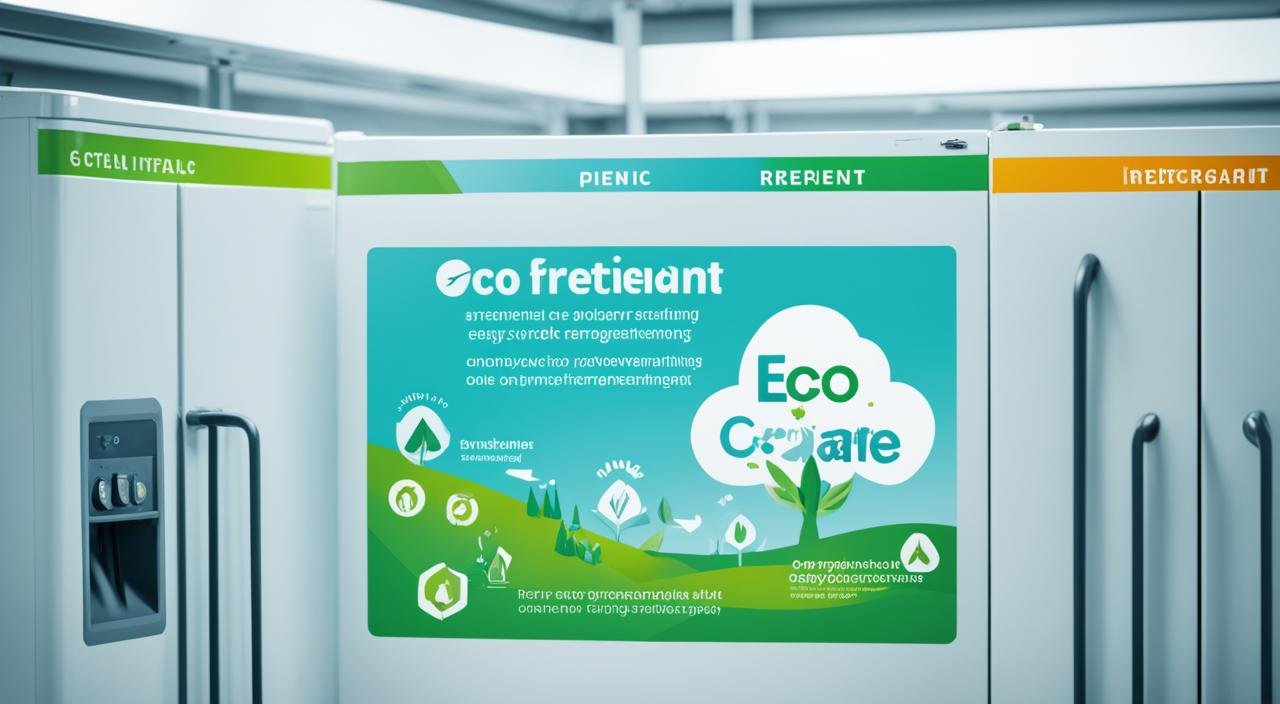Welcome to our comprehensive guide to eco-friendly and natural pest repellents. In this article, we will explore various methods and solutions to keep your home bug-free without relying on harsh chemicals or harmful methods. By utilizing natural pest repellents, you can maintain a safe and healthy environment while effectively deterring pests.
Key Takeaways
- Utilize natural pest repellents to keep your home bug-free safely and without harmful chemicals.
- Explore alternative methods such as using scents, plants, and essential oils to naturally repel pests.
- Choose eco-friendly pest management options for a more sustainable and environmentally friendly approach.
- Be aware of the downsides of traditional pest control methods to make informed decisions.
- Consider integrated pest management techniques to maintain a healthy ecosystem and prevent pest issues.
11 Ways to Remove Pests Naturally
When it comes to getting rid of pests in your home and garden, there are eco-friendly and natural pest control methods that can effectively solve the problem. You have the option to hire eco-friendly pest removal companies or take matters into your own hands through a DIY approach. We will share with you 11 proven methods that can help you eliminate pests naturally, without harming the environment or posing risks to humans and pets.
- Growing a healthy garden: A well-maintained garden with healthy plants and soil can naturally deter pests through its biodiversity and resilience.
- Planting pest-control herbs: Certain herbs like basil, mint, and lavender have natural pest-repellent properties that can keep your garden free from unwanted insects.
- Using spices to ward off pests: Spices like cayenne pepper, garlic, and cinnamon can be used strategically to repel pests.
- Cleaning with essential oils and vinegar: Essential oils like peppermint, tea tree, and eucalyptus, when mixed with vinegar, create a potent cleaning solution that deters pests.
- Using food waste as an insect repellent: Certain food waste, like coffee grounds and citrus peels, can be scattered around your garden to repel pests.
- Trying boric acid: Boric acid is a natural insecticide that can be used to eliminate pests like ants and cockroaches.
- Using humane traps to relocate rodents: Humane traps can be used to catch rodents and safely release them far away from your home.
- Attracting birds to do pest removal: Encouraging bird activity in your garden by providing birdhouses and bird feeders can help control pests naturally.
- Using natural pesticides: Natural pesticides, derived from plants or bacteria, can effectively target specific pests without harming beneficial insects.
- Trying microbial insecticides: Microbial insecticides contain microorganisms that attack pests while leaving beneficial insects unharmed.
- Sprinkling diatomaceous earth: Diatomaceous earth, a natural sedimentary rock, can be sprinkled in affected areas to dehydrate and kill insects.
By incorporating these natural pest control methods into your routine, you can create a pest-free environment without relying on chemical-based solutions. Whether you choose to implement one or several of these strategies, you’ll be contributing to a healthier and eco-friendly approach to pest management.
Benefits of Eco-Friendly Pest Control
Using eco-friendly pest control methods offers a range of benefits when compared to traditional pesticides and fumigation. These sustainable and non-toxic approaches not only provide better long-term results but also safeguard your garden, protect beneficial insects and animals, ensure pet safety, and maintain a harmonious home environment. By opting for eco-friendly pest control, you can effectively manage pests while preserving the health of your family, pets, and the environment.
Here are some key advantages of eco-friendly pest control:
- Better long-term results: Eco-friendly pest control methods focus on addressing the root causes of pest problems rather than simply treating the symptoms. By implementing sustainable and natural deterrents, you can establish a pest-resistant environment that prevents future infestations.
- Less damage to your garden and lawn: Unlike chemical pesticides, eco-friendly pest control methods do not harm your plants, flowers, or turf. Instead, they promote a healthy and vibrant garden ecosystem.
- Protection of beneficial insects and animals: Eco-friendly pest control targets specific pests, minimizing unintended harm to beneficial insects, birds, and animals. It helps maintain the natural balance of your garden and supports biodiversity.
- Pet-safe: Eco-friendly pest control methods utilize non-toxic ingredients, ensuring the safety of your furry friends. You can effectively manage pests without worrying about potential harm to your pets.
- Minimal disruption to your home: Traditional pest control often requires the evacuation of your home, but eco-friendly methods allow you to continue your daily activities without interruption or exposure to harmful chemicals.
Eco-friendly pest control provides a holistic and sustainable approach to pest management. By embracing these methods, you not only protect your garden but also contribute to the preservation of the environment and the well-being of your loved ones.
Downsides of Traditional Pest Control
Traditional pest control methods that rely on chemical pesticides have several downsides. These methods, although commonly used, come with significant drawbacks that can have harmful effects on both the environment and human health.
One of the major concerns with traditional pest control is the use of chemical pesticides. These pesticides contain toxic substances that can be harmful to pets, wildlife, and humans. Exposure to these chemicals can lead to various health problems, including respiratory issues, skin irritations, and even more severe conditions.
Chemical pesticides not only pose risks to living creatures but also have negative impacts on the ecosystem. They can harm beneficial insects and animals like bees, butterflies, and birds, disrupting the delicate balance of nature. This disruption can result in the decline of pollinators and other important species, leading to further ecological imbalances.
Moreover, traditional pest control methods often require fumigation, which involves the use of toxic gases or chemicals to eliminate pests. Fumigation processes can be highly intrusive and may require evacuation or sealing off areas, causing inconvenience and disruption to homeowners.
The Harmful Effects of Pesticides
“Chemical pesticides can have long-lasting effects on the environment and human health. Their harmful impacts can persist even after the application, making it crucial to consider alternative pest control methods.”
Chemical pesticides also have the potential to damage your garden and lawn. These powerful toxins can harm plants, leading to stunted growth, yellowing leaves, and even plant death. Additionally, chemical residues can contaminate soil and water, further compromising the overall health of the environment.
To mitigate these downsides, it is essential to explore safer alternatives for pest control. By opting for eco-friendly and non-toxic pest management methods, homeowners can prioritize the well-being of the environment and protect their families from the harmful effects of pesticides.
Alternative pest control approaches can effectively manage pests without relying on chemical pesticides. These methods often involve the use of natural ingredients, such as essential oils, organic repellents, or physical barriers, to deter pests while minimizing environmental harm.
By considering the downsides of traditional pest control and embracing eco-friendly alternatives, we can create a healthier and more sustainable approach to managing pests in our homes and gardens.
Integrated Pest Management
Integrated pest management (IPM) is a comprehensive and sustainable approach to pest control that focuses on preventing and managing pest problems using a combination of techniques. By integrating physical, cultural, biological, and chemical control methods, IPM aims to minimize the use of chemical pesticides while effectively managing pests.
IPM emphasizes the importance of understanding the pest’s life cycle, behavior, and habitat in order to develop an effective management plan. By implementing preventive measures and monitoring pest populations, homeowners can identify early signs of infestation and take action before the problem becomes severe.
Physical control methods involve using barriers, traps, or exclusion techniques to prevent pests from entering the property or specific areas. For example, sealing cracks and openings in buildings, installing screens on windows and doors, or using physical barriers like netting or fences can help keep pests out.
Cultural control methods focus on modifying the environment to make it less favorable for pests. This can include practices such as proper sanitation, reducing clutter, keeping the area clean and dry, and eliminating potential food and water sources for pests.
Biological control methods involve using natural predators, parasites, or pathogens to control pest populations. For example, introducing ladybugs to eat aphids or using nematodes to target specific pests can help maintain a natural balance in the ecosystem and reduce pest populations.
Chemical control methods, while used as a last resort in IPM, can be employed if necessary. However, the aim is to use targeted and low-toxicity pesticides instead of broad-spectrum chemicals. This minimizes the impact on non-target organisms and reduces the risk of chemical residues in the environment.
By implementing IPM strategies, homeowners can achieve effective pest control while minimizing negative impacts on the environment and human health. IPM promotes a balanced and resilient ecosystem that can naturally control pest populations, reducing the dependence on chemical pesticides.
Using IPM not only protects your home and garden but also contributes to the overall health of the environment. By utilizing natural pest control methods and embracing ecosystem-based pest control, we can create a harmonious coexistence with pests, promoting the well-being of our surroundings.
By adopting non-chemical pest control methods and practicing pest prevention strategies, we can create a sustainable and eco-friendly way of managing pests. Integrated pest management provides a holistic approach that not only solves immediate pest issues but also focuses on long-term prevention and the preservation of our precious ecosystems.
Eco-Friendly Landscape Practices
Eco-friendly landscape practices play a vital role in creating a beautiful and sustainable garden that is resistant to pests. By following these top tips for greener yards, you can establish a naturally balanced environment that supports the overall health of your backyard. Implementing these practices will not only reduce the need for extensive pest control measures but also contribute to sustainable gardening and conservation efforts.
Proper Plant Placement
One of the key aspects of eco-friendly landscape practices is placing plants strategically to maximize their benefits. Consider factors such as sunlight, soil conditions, and water availability when deciding where to plant different varieties. By placing plants in suitable locations, they can thrive naturally, enhancing their pest resistance and overall vitality.
Planting Native and Sustainable Plants
Choosing native plants for your garden is a smart choice as they are naturally adapted to the local climate and soil. These plants require less water, fertilizer, and pest control, making them ideal for eco-friendly gardening. Additionally, opt for sustainable plants that support biodiversity and attract beneficial insects like pollinators and predators that prey on garden pests.
Avoiding Invasive Species
Invasive plant species can disrupt the natural balance and biodiversity of your garden. They can outcompete native plants, spread rapidly, and become difficult to control. To maintain an eco-friendly landscape, research and identify invasive species in your region and avoid planting them.
Effective Weed Management
Weeds not only compete with your desired plants for nutrients but also provide hiding spots for pests. Implement organic weed management practices such as mulching, hand weeding, and using natural weed control methods. This will help suppress weed growth and minimize the use of herbicides, contributing to a healthier garden ecosystem.
Lawn Care Practices
For a thick and healthy grass lawn, adopt eco-friendly lawn care practices. Regularly mow at the proper height, leaving the grass slightly longer to encourage strong root growth and shade out weeds. Use organic fertilizers or compost to nourish the soil, and avoid overwatering to conserve water resources.
| Benefits of Eco-Friendly Landscape Practices | Methods |
|---|---|
| 1 | Reduces the need for chemical pesticides |
| 2 | Promotes biodiversity and supports beneficial insects |
| 3 | Conserves water and other natural resources |
| 4 | Creates a healthier and more resilient garden ecosystem |
| 5 | Contributes to sustainable gardening and environmental conservation |
| 6 | Enhances the aesthetic appeal of your garden |
By following these eco-friendly landscape practices, you can create a harmonious garden ecosystem that promotes natural pest prevention, supports native plants and wildlife, and reduces the use of harmful chemicals. Embracing sustainable gardening not only benefits your immediate surroundings but also contributes to a greener and healthier planet.
Pesticides
In our quest to control pests, we often turn to pesticides. Pesticides are substances specifically designed to eliminate or manage pest populations. They come in various forms and are categorized based on the specific pests they target. Let’s delve into the world of pesticides and explore the different types available to us.
Insecticides
Insecticides are pesticides formulated to combat insect infestations. They are widely used in agriculture, horticulture, and residential settings. Insecticides work by directly affecting the insects’ nervous systems, causing paralysis or death. Some common types of insecticides include:
- Organophosphates
- Pyrethroids
- Neonicotinoids
- Botanical insecticides
Herbicides
Herbicides are designed to control or kill unwanted plants, commonly known as weeds. They are used in gardens, lawns, agricultural fields, and other outdoor spaces. Herbicides work by interfering with various physiological processes of plants, leading to their demise. Some commonly used herbicides include:
- Selective herbicides
- Non-selective herbicides
- Pre-emergent herbicides
- Systemic herbicides
Fungicides
Fungicides are used to prevent or treat fungal infections in plants. They are commonly applied to crops, gardens, and ornamental plants to control diseases caused by fungi. Fungicides work by inhibiting the growth and reproduction of fungi. Some types of fungicides include:
- Contact fungicides
- Systemic fungicides
- Protectant fungicides
- Curative fungicides
Rodenticides
Rodenticides are pesticides developed to control populations of rodents such as mice and rats. They are used in residential, commercial, and agricultural settings to prevent damage and disease spread. Rodenticides work by disrupting the blood-clotting mechanisms of rodents or causing fatal toxicity. Common types of rodenticides include:
- Anticoagulant rodenticides
- Non-anticoagulant rodenticides
It’s important to note that the spectrum of efficacy varies among different pesticides. Some pesticides may only target specific pests, while others have a broader spectrum. To effectively manage pests, proper identification is crucial before selecting a pesticide.
While pesticides have been an integral part of pest control, there is a growing awareness of the potential risks associated with their use. The environmental impact, potential effects on human health, and harm to non-target organisms are some concerns. That’s why many homeowners are now exploring non-toxic pest control alternatives.
Pesticide Labels
Pesticide labels play a crucial role in ensuring the safe and effective use of pesticides. Understanding the information provided on these labels is essential for homeowners to make informed decisions, follow proper usage guidelines, and comply with pesticide regulations.
When examining a pesticide label, you will find several important elements that provide valuable information about the product:
- Brand Name: The brand name identifies the manufacturer or distributor of the pesticide.
- Active Ingredients: These are the chemicals responsible for controlling pests. Knowing the active ingredients is vital for determining the pesticide’s efficacy and potential risks.
- Inert Ingredients: Inert ingredients are substances that are not intended to control pests but may be added to enhance the formulation or application of the pesticide.
- Signal Words: Signal words, such as “Danger,” “Warning,” or “Caution,” indicate the toxicity level of the pesticide. These words alert users to the potential hazards associated with the product.
- Instructions for Use: The label provides detailed instructions on how to apply the pesticide safely and effectively. It includes information on dosage, application methods, timing, and any necessary safety precautions.
- Storage and Disposal: Proper storage and disposal instructions are provided to prevent accidental exposure, contamination, or environmental damage.
By thoroughly understanding pesticide labels, homeowners can make informed decisions when selecting and using pesticides, ensuring compliance with federal regulations and minimizing harm to the environment and human health.
The Importance of Reading Pesticide Labels
Reading and following pesticide labels is crucial for several reasons:
“Pesticide labels provide detailed information on how to handle, apply, and store the product safely, reducing the risk of accidents, exposure, and environmental harm. By following label instructions, we can protect ourselves, our families, and the ecosystem.”
Additionally, pesticide labels help homeowners understand the potential risks associated with using the product, allowing them to make an informed decision about its suitability for their specific needs.
| Label Element | Description |
|---|---|
| Brand Name | Identifies the product’s manufacturer or distributor |
| Active Ingredients | Chemicals responsible for controlling pests |
| Inert Ingredients | Substances added to enhance the formulation or application |
| Signal Words | Indicate the pesticide’s toxicity level |
| Instructions for Use | Guidelines on proper application, dosage, and safety precautions |
| Storage and Disposal | Guidance on how to store and dispose of the pesticide |
Remember, pesticide labels serve as valuable resources for homeowners, providing essential information to ensure safe and responsible pesticide use. By closely following the instructions and guidelines on pesticide labels, you can protect yourself, your loved ones, and the environment from potential harm.
Alternative Pesticides
When it comes to pest control, there are alternative pesticides that can effectively deter pests without posing risks to human health or the ecosystem. These eco-friendly options provide a safe and sustainable approach to pest management. Here are some alternative pesticides to consider:
Diatomaceous Earth
Diatomaceous earth is a natural substance made from fossilized remains of diatoms, a type of algae. It works by dehydrating and damaging the exoskeleton of pests, ultimately leading to their demise. This powdery substance is particularly effective against crawling insects such as ants, cockroaches, and bed bugs.
Neem Oil
Neem oil is derived from the seeds of the neem tree, native to India. It acts as a repellent and disrupts the growth and reproductive cycle of pests. Neem oil is effective against a wide range of pests, including aphids, mites, and whiteflies. It is environmentally friendly and safe to use around humans and pets.
Peppermint, Thyme, and Rosemary Oil Repellents
Essential oils such as peppermint, thyme, and rosemary have strong scents that repel pests. These oils can be diluted with water and sprayed around windows, doorways, and other entry points to deter pests like spiders, ants, and mosquitoes. They provide a natural and pleasant-smelling alternative to chemical-based repellents.
Homemade Insecticidal Soaps
Insecticidal soaps are made by combining mild dish soap with water. This solution can be sprayed directly on pests, suffocating them on contact. Insecticidal soaps are effective against soft-bodied insects like aphids, mealybugs, and spider mites. They are safe for use on most plants and can be easily prepared at home.
Oil Sprays
Oil sprays are derived from natural oils such as mineral oil or vegetable oil. They work by coating pests and smothering them. Oil sprays are effective against a wide range of pests, including scales, mites, and aphids. They are safe to use on most plants and can be applied as a preventive measure or to control existing infestations.
Vinegar
Vinegar is a versatile household ingredient that can also be used as a natural pest deterrent. Its strong acidic properties make it effective against ants, flies, and fruit flies. Simply dilute vinegar with water and spray it in areas where pests are prevalent.
Boiling Water
For pests like weeds, boiling water can be an effective and natural solution. Simply pour boiling water directly onto the weeds, ensuring it reaches the roots. This method is especially useful for controlling weeds in areas where chemical herbicides are not suitable.
Peppermint Oil
Peppermint oil has a strong scent that repels pests, particularly rodents like mice and rats. Soak cotton balls in peppermint oil and place them in areas where pests are likely to enter. The smell will discourage rodents from entering your home.
By using alternative pesticides, you can effectively manage pests while promoting a safer and healthier environment for you, your family, and the ecosystem. These natural pest management options offer eco-friendly and non-toxic alternatives to traditional chemical-based solutions.
Conclusion
In conclusion, natural pest repellents and eco-friendly pest control offer non-toxic alternatives to conventional pesticides. By incorporating these methods, homeowners can effectively manage pests while prioritizing the well-being of the environment and the health of humans and pets. Whether it involves using scents, plants, essential oils, or eco-friendly products, there are numerous options available for environmentally friendly pest management.
By adopting eco-friendly pest control practices, you can create a healthier and pest-free environment for your home and garden. These methods not only provide effective pest repellents but also contribute to sustainable pest management. Embracing natural pest control solutions helps minimize the use of harmful chemicals and promotes the natural balance of ecosystems.
With a wide range of natural pest repellents and non-toxic alternatives at your disposal, you can keep pests at bay without compromising the well-being of your family, pets, and the environment. Embrace the power of eco-friendly pest control and pave the way for a greener and healthier future for all.





